What the Romans did not do for us
A major exhibition explores the evolution of island identity on Cyprus, Crete and Sardinia from the Neolithic to the Romans
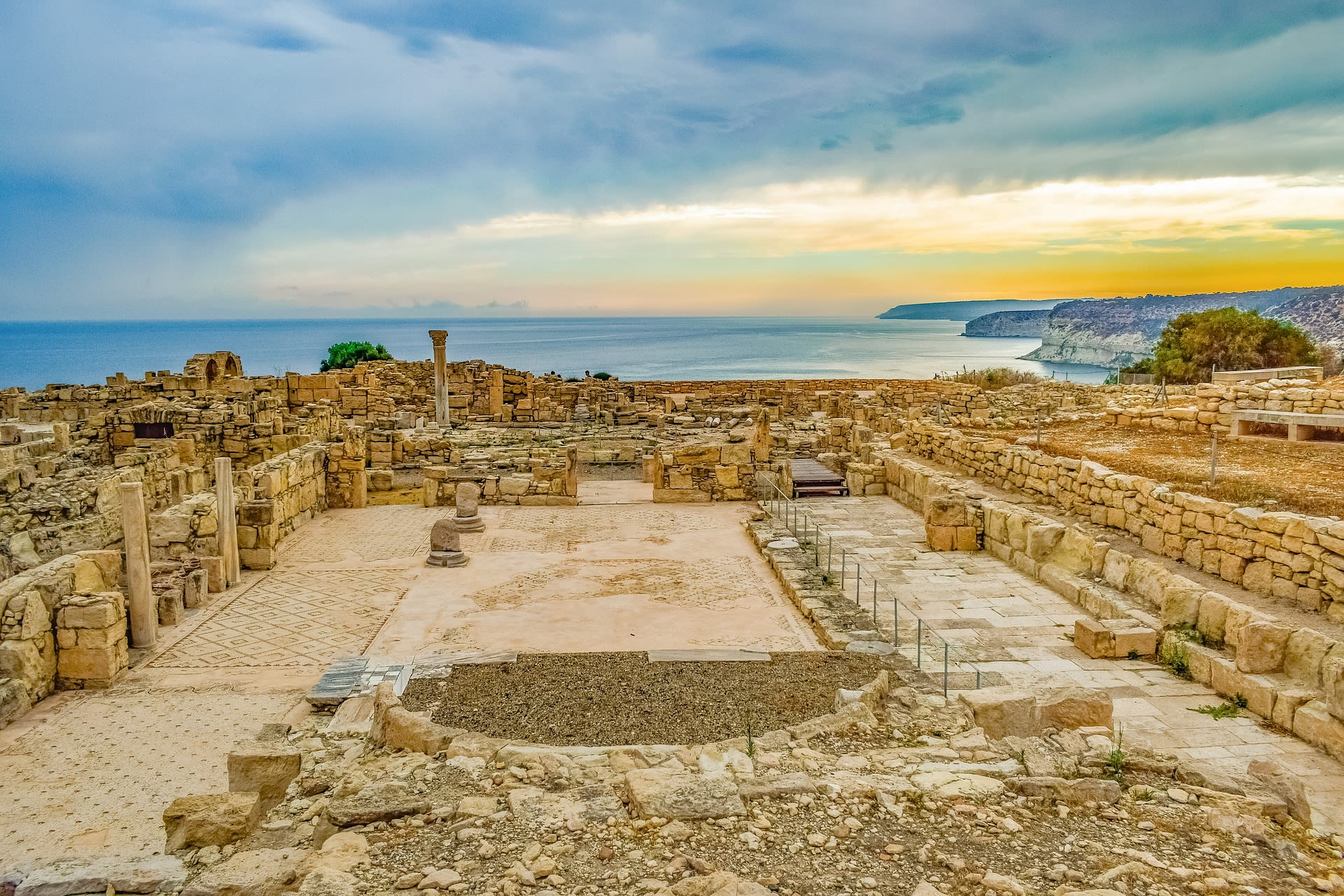
A seated mother cradles a child on her lap.
He must be six or seven years old. The woman sits bolt upright, her right hand raised, not to greet us, but in prayer. She meets our gaze but her child seems limp, too limp. On closer inspection, it becomes apparent that he is dead and not actually a child. This mother is cradling an adult son, a soldier killed in battle. An unknown sculptor has reduced him to child size for symbolic effect.
After 3,000 years, this unassuming bronze figurine, just 10cm tall, continues to say: ‘he’s still her child’. Excavated from a Nuragic sanctuary in Sardinia, this object goes to the heart of a refreshingly unfamiliar exhibition at the Fitzwilliam Museum in 2023.
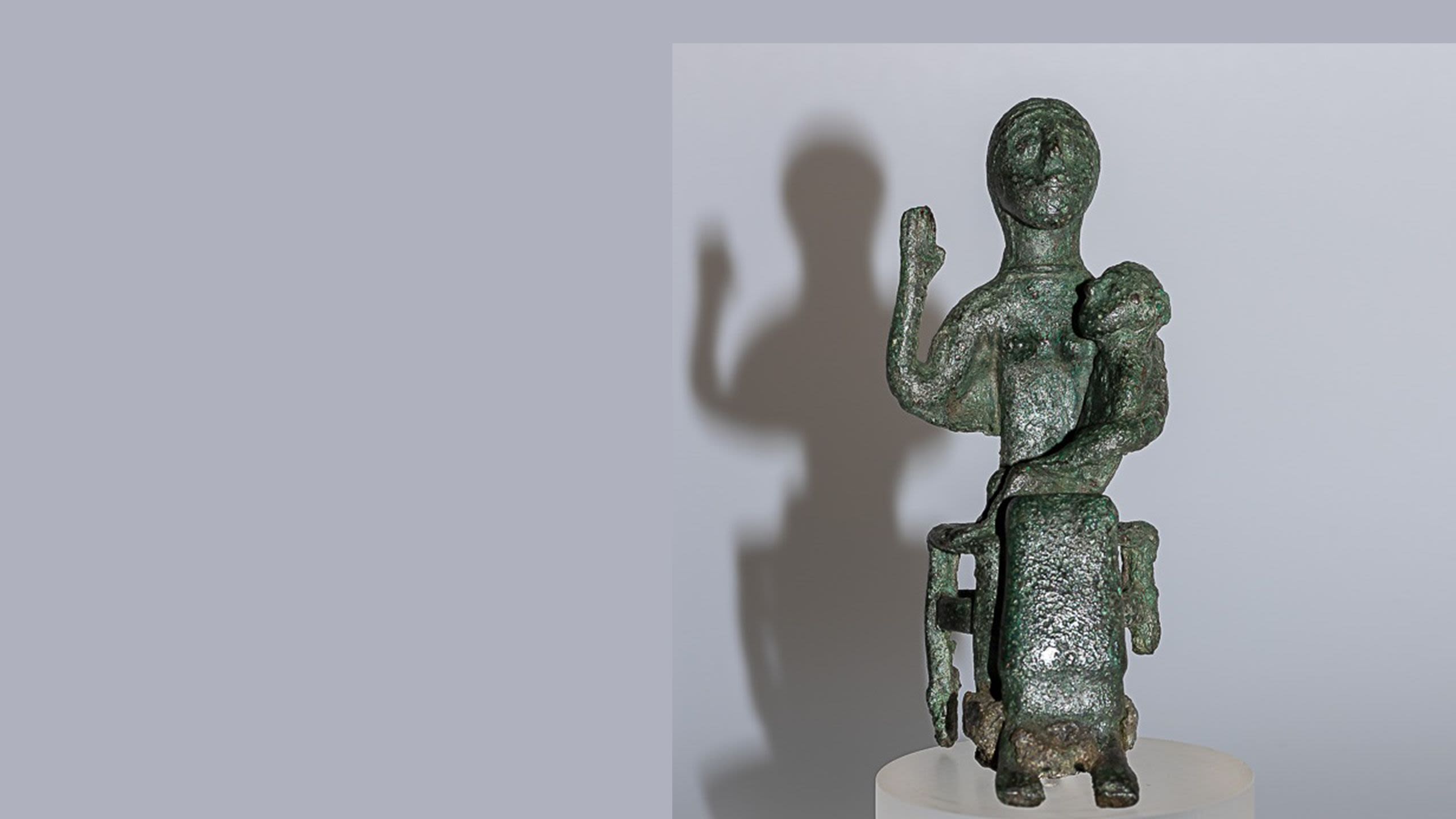
Islanders: The making of the Mediterranean (24 February - 4 June 2023) topples gods, emperors and generals from a stage which has produced many an ancient world blockbuster for museums in recent years.
“For a long time, everything has been directed around questions of power and elite groups in archaeology, particularly in Mediterranean archaeology,” says Dr Anastasia Christophilopoulou, the exhibition’s curator and the Fitzwilliam’s Senior Curator of the Ancient Mediterranean.
“Our exhibition is different. We are interested in island identity, and if you really want to understand that in the ancient world, you need to look at the cultural identity of everyday life. How were resources used and how did that shape perceptions of a place? How did people come together, and how did they view one another?”
Islanders is the culmination of a three-year interdisciplinary research project, led by Dr Christophilopoulou, which examines 4,000 years of art and identity on three of the Mediterranean’s largest and most culturally rich islands: Cyprus, Crete and Sardinia.
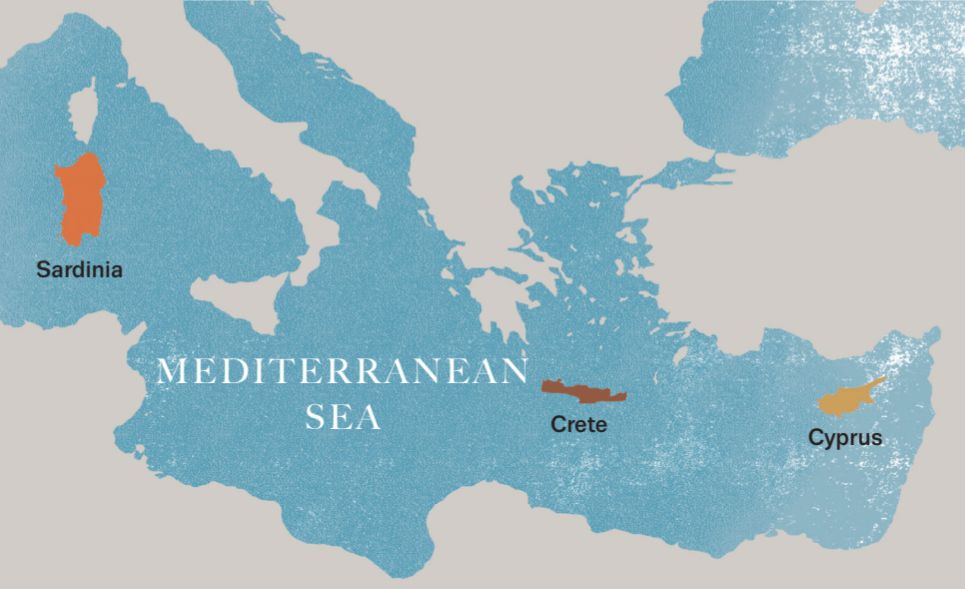
Local knowledge
The project and its exhibition are unusual not only for their interest in relatively overlooked pre-Roman societies but also because of their collaboration with their modern-day island descendants. Typically, major museums decide on an exhibits ‘wish list’ before sending out loan requests, usually to other large institutions. Not so for Islanders.
Dr Christophilopoulou spent months in the store rooms of several regional museums in Cyprus, Crete and Sardinia learning from and exchanging ideas with local archaeologists and curators. It was from these conversations, together with interactions with local artisans and community groups on the islands and in UK diasporas, that research project and exhibition took shape.
“This was a laborious way of doing things but it was essential to include their views on how an object really belonged to a particular narrative and what it still means for their community,” says Dr Christophilopoulou.
“In Paphos, I saw amazing finds from Iron Age graves, objects which had been influenced by both Greece and Phoenicia. This was evidence of a hybrid community living in harmony and when I spoke to the archaeologists who had actually dug this site, they emphasised that this had been happening on Cyprus for millennia.
“Cyprus has been invaded and settled by nearly everyone in the eastern Mediterranean and this continues to raise powerful questions about the nature and meaning of identity on the island today.”
The project’s community engagement work also led to the co-creation of a film and an array of contemporary art, poetry and performance pieces.
Excerpt from 'Being an Islander' film: The Mayor of Siphnos explains the meaning of the sea
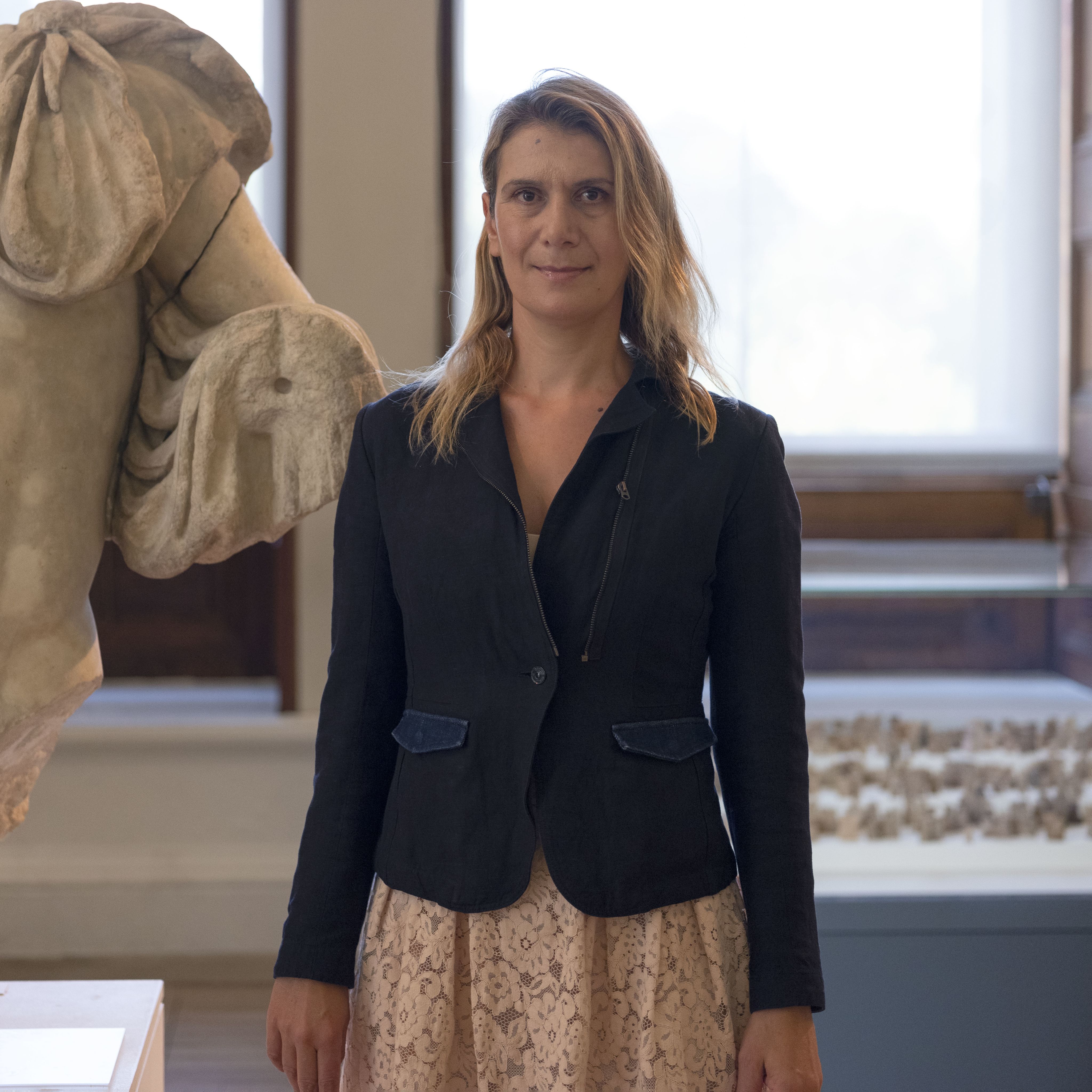
Dr Anastasia Christophilopoulou
Dr Anastasia Christophilopoulou
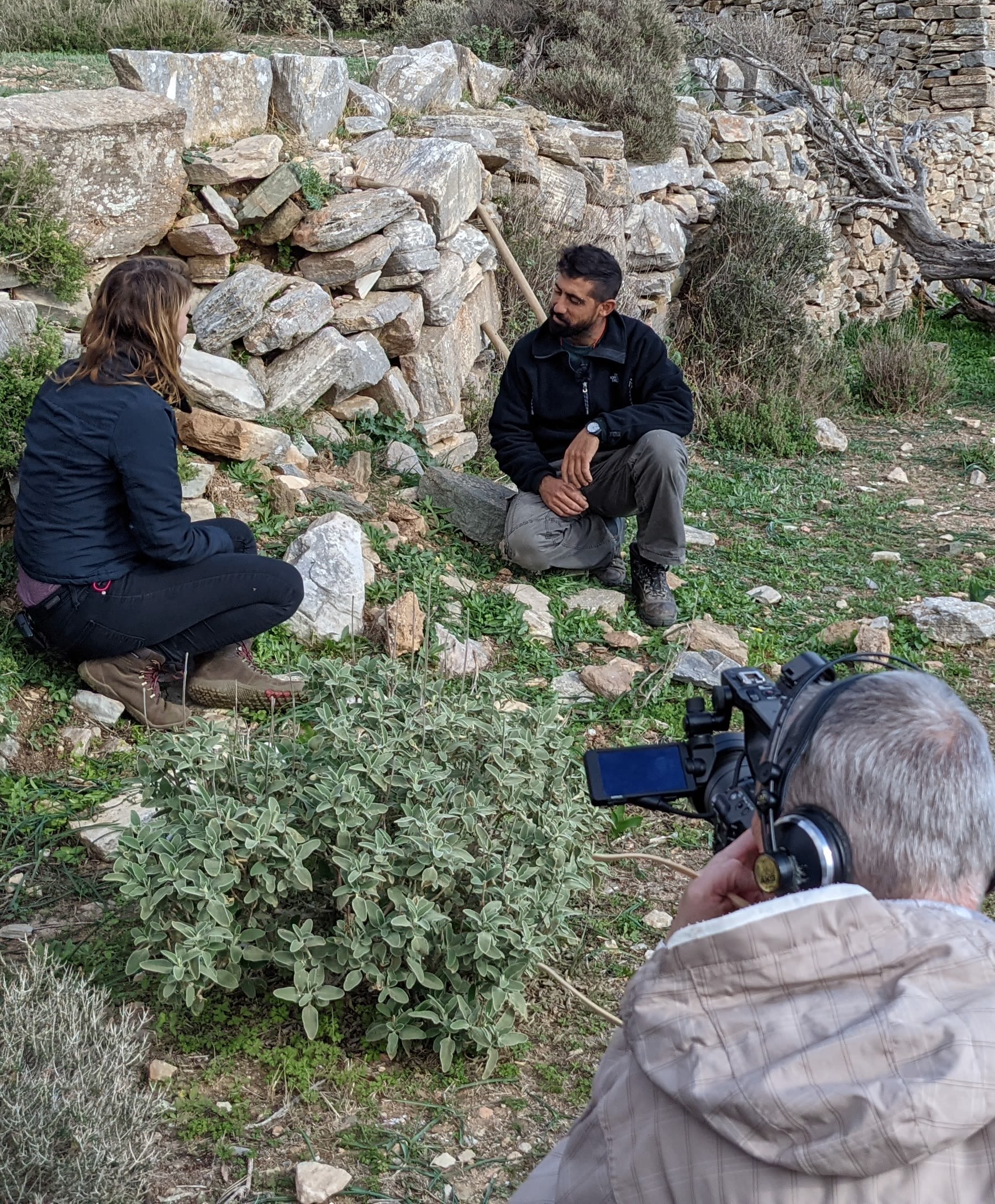
Dr Christophilopoulou interviewing a local Siphnian terrace wall maker for the 'Being an Islander' documentary in 2022.
Dr Christophilopoulou interviewing a local Siphnian terrace wall maker for the 'Being an Islander' documentary in 2022.
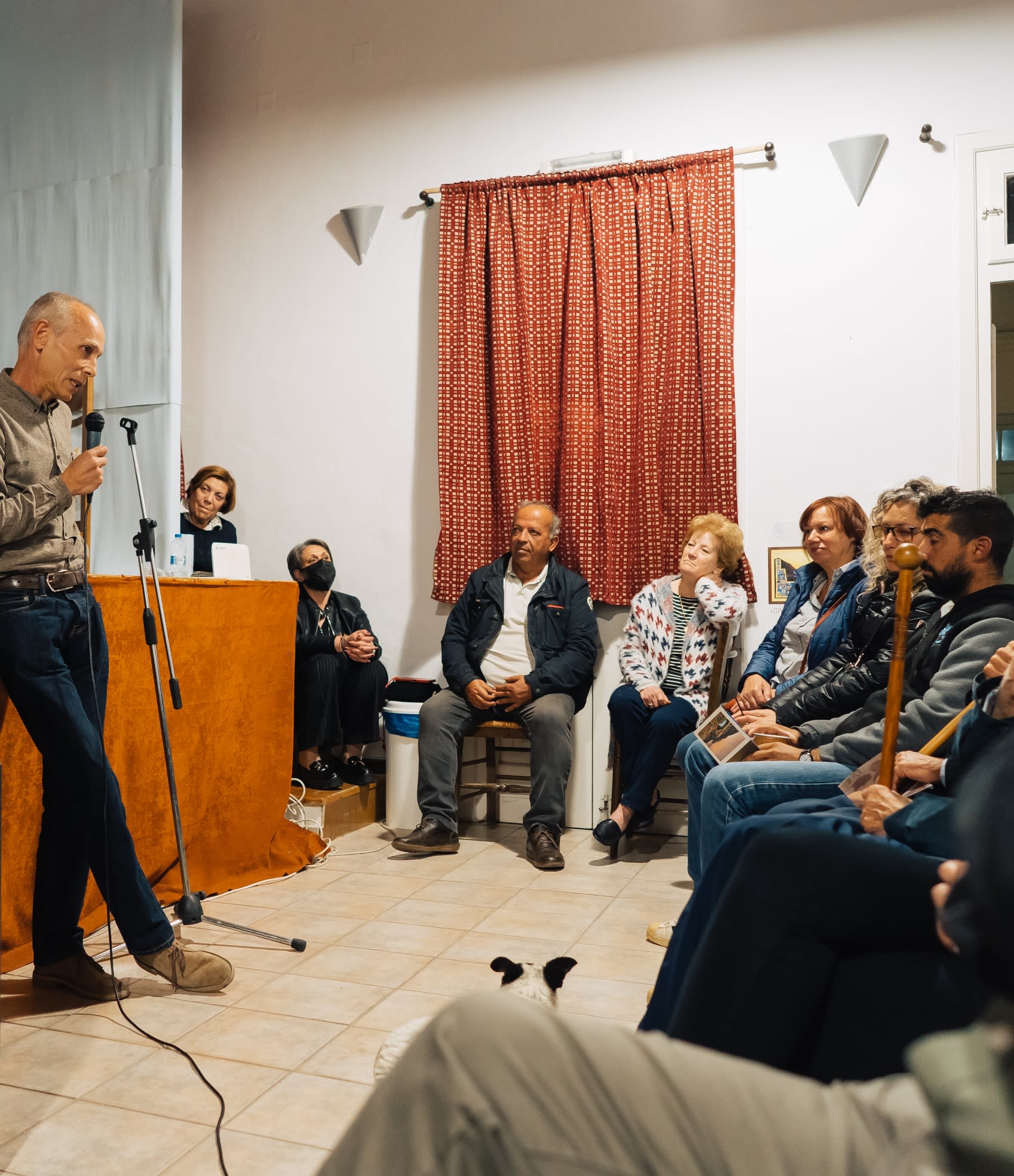
'Being an Islander' producer, Dr Dimitrios Bouras, introduces the film to the Siphnos community that supported it (2022)
'Being an Islander' producer, Dr Dimitrios Bouras, introduces the film to the Siphnos community that supported it (2022)
From Rome’s shadow
Cyprus, Crete and Sardinia attract millions of tourists, not least from Britain, every year and many will have encountered Rome’s classical cultural legacy there.
“We are revealing something very different for the first time here,” says Dr Christophilopoulou. “Through the Bronze Age, the Iron Age and even the classical period, you have such different expressions of identity in these three islands.
“The Roman period is the first time in history that a unifying culture spread across them and the entire Mediterranean. But when you zoom in on communities, you still see an amazing variety of local material culture and cultural expression carrying on for nearly four centuries.”
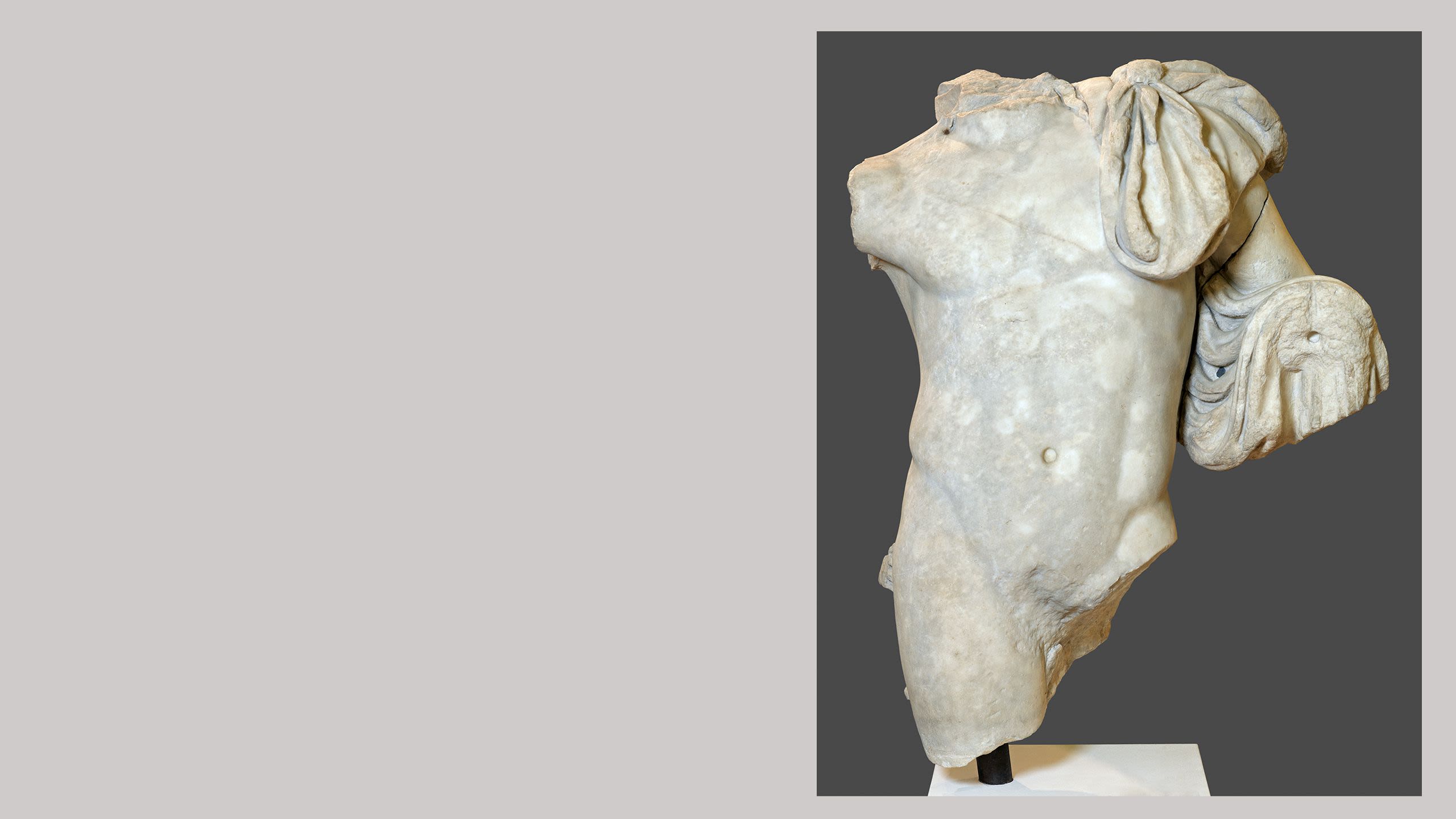
Cambridge in Cyprus
The Fitzwilliam Museum and the University of Cambridge have deep archaeological roots in Cyprus, the best-represented island in the exhibition. The Fitzwilliam Museum is home to a unique collection of Cypriot antiquities and Cambridge academics played a key role in the Cyprus Exploration Fund (CEF) which led major archaeological excavations in the late nineteenth century.
They included the classicists Henry Jackson (Trinity) and John Edwin Sandys (St John’s); the Slade Professor of Fine Art John Henry Middleton; and the Fitzwilliam Museum’s then Director, Charles Waldstein.
“These excavations were conducted to very high standards for the time,” says Dr Christophilopoulou. “This was happening before the British occupation of the island and they worked with Cypriots, at the time Ottoman citizens.
“The Fitzwilliam Museum still holds journals from these excavations and as a field archaeologist myself, I can appreciate how pioneering they were in the way they dug and recorded. Even decades later, people would go to Cyprus and excavate with far less care.”
In the ancient city of Marion, the CEF discovered this masterfully crafted gold earring (400–300 BCE) depicting a calf’s head and presented it to the Fitzwilliam Museum. The earring reflects the style and taste prevalent in jewellery throughout the Hellenistic world but would only have been worn in death.

Calf-head earring (gold, 400–300 bce). Found Marion, Cyprus. Fitzwilliam Museum, Cambridge
Calf-head earring (gold, 400–300 bce). Found Marion, Cyprus. Fitzwilliam Museum, Cambridge
Seen for the first time
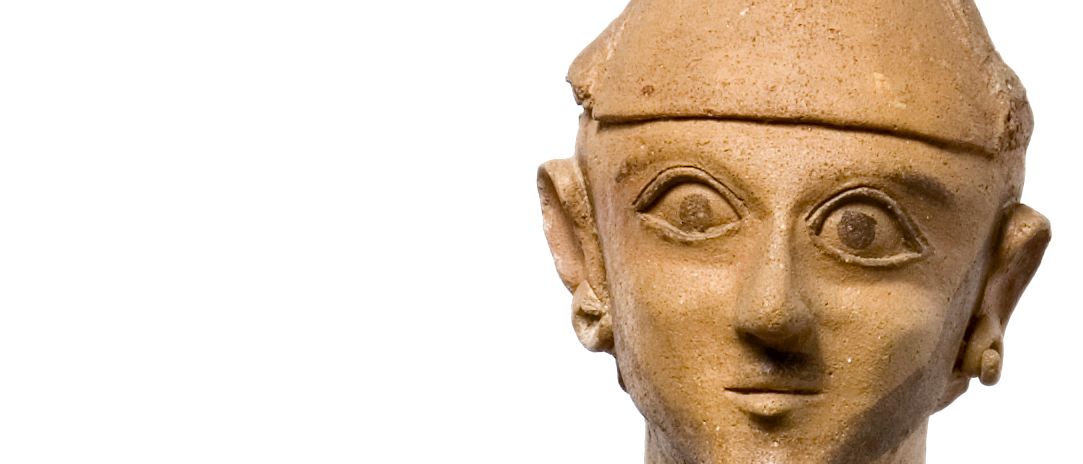
The exhibition showcases some of the Fitzwilliam’s finest Cypriot objects, reunited for the first time with major loans from the island, many of which have never been displayed in Cyprus and which have never travelled overseas.
Some of the most important come from the Early Bronze Age cemetery of Bellapais Vounous, close to Cyprus’ north coast. The exhibition reunites, for the first time, ceramic burial goods held by the Fitzwilliam and MAA (Cambridge), with loans from the Cyprus Museum which clarify their shared symbolism, design, methods of production and roles in ceremonies to honour the dead.
“Before the funeral, the whole community would come together around the grave to feast. When the party was over, these elaborately decorated ceramic bowls, boxes and flasks, would be sealed in the grave. This was about honouring the deceased but also emphasising the strength of the community.”
For the last three years, Rafael Laoutari, a doctoral researcher under the supervision of Dr Christophilopoulou and Professor Cyprian Broodbank in Cambridge’s Department of Archaeology has been studying Bellapais Vounous. The project has also enabled scientific analysis of copper alloy toggle-pins – a type of dress pin – found in one of the site’s tombs, as well as other metal objects in the exhibition.
The Fitzwilliam has very few holdings of Cretan antiquities – the major exception being its astonishing Pashley Sarcophagus – and none from Sardinia.
One of the most startling loans, from Crete’s Heraklion Archaeological Museum, is a curved clay burial chest (larnax) – from the island’s Cemetery of Pacheia Ammos, and decorated with distinctive wave motifs – into which a member of the Minoan elite was carefully folded soon after death around 4,000 years ago. The man’s skeleton will remain on Crete.

‘Tulip’ bowl (ceramic, ca. 2250/ 2200 – 2100/ 2050 bce) found cemetery of Bellapais-Vounous, Cyprus. Fitzwilliam Museum, Cambridge
‘Tulip’ bowl (ceramic, ca. 2250/ 2200 – 2100/ 2050 bce) found cemetery of Bellapais-Vounous, Cyprus. Fitzwilliam Museum, Cambridge
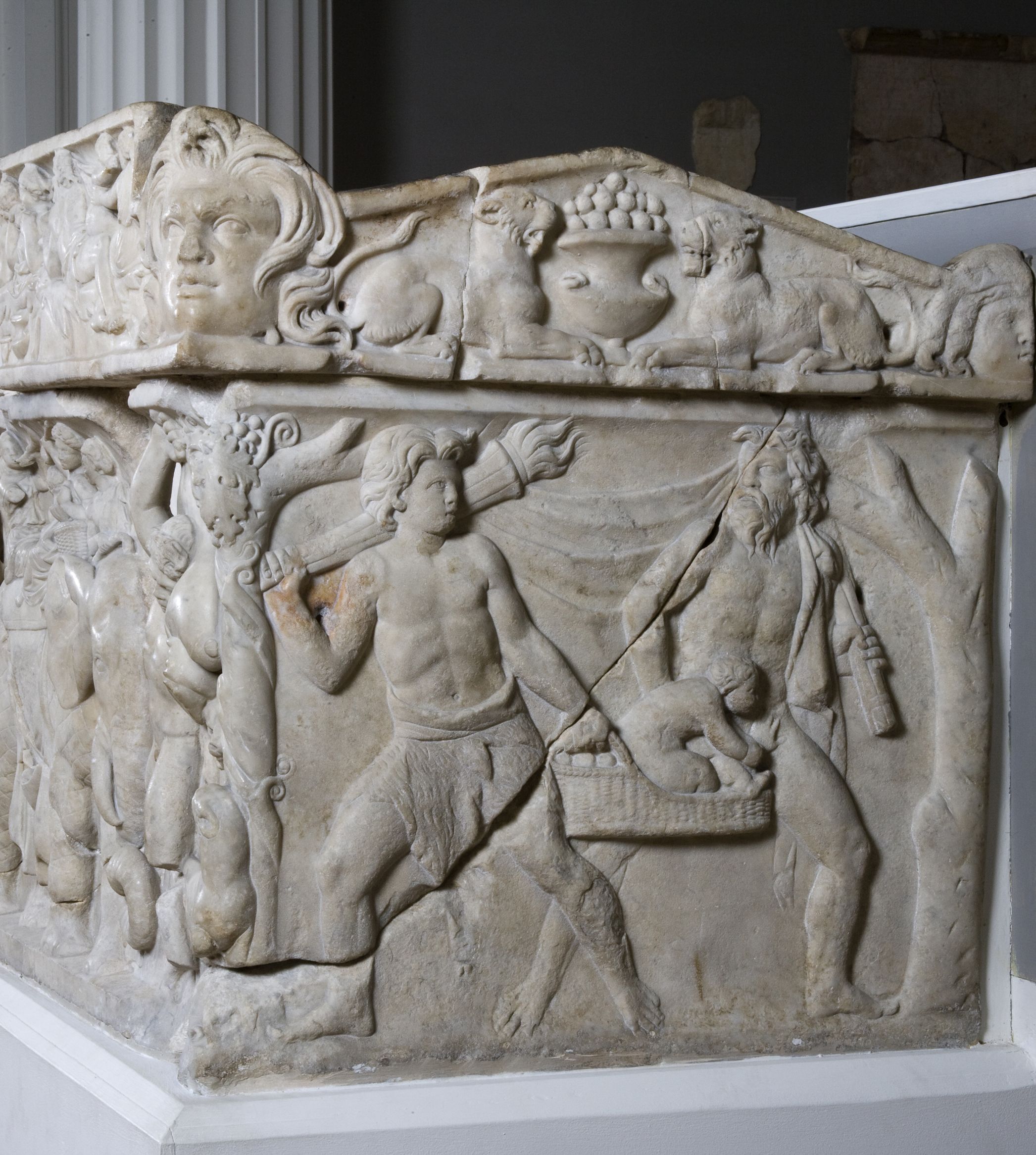
Pashley Sarcophagus (marble, 101-200 AD). Fitzwilliam Museum, Cambridge
Pashley Sarcophagus (marble, 101-200 AD). Fitzwilliam Museum, Cambridge
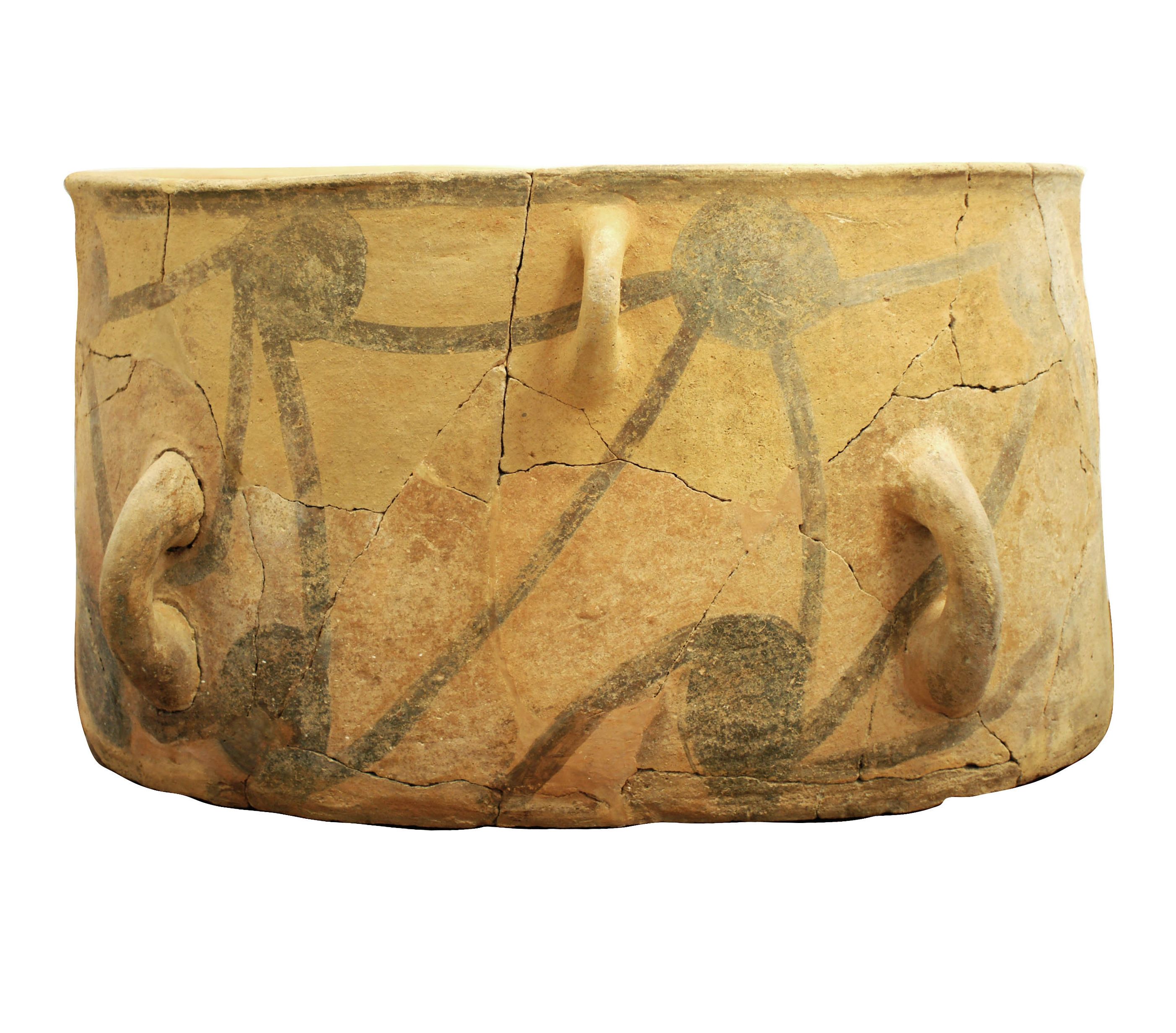
Clay burial chest (larnax) (ceramic, ca. 2000–1800 bce). Found cemetery of Pacheia Ammos, Crete. Heraklion Archaeological Museum
Clay burial chest (larnax) (ceramic, ca. 2000–1800 bce). Found cemetery of Pacheia Ammos, Crete. Heraklion Archaeological Museum
Exhibits to look out for
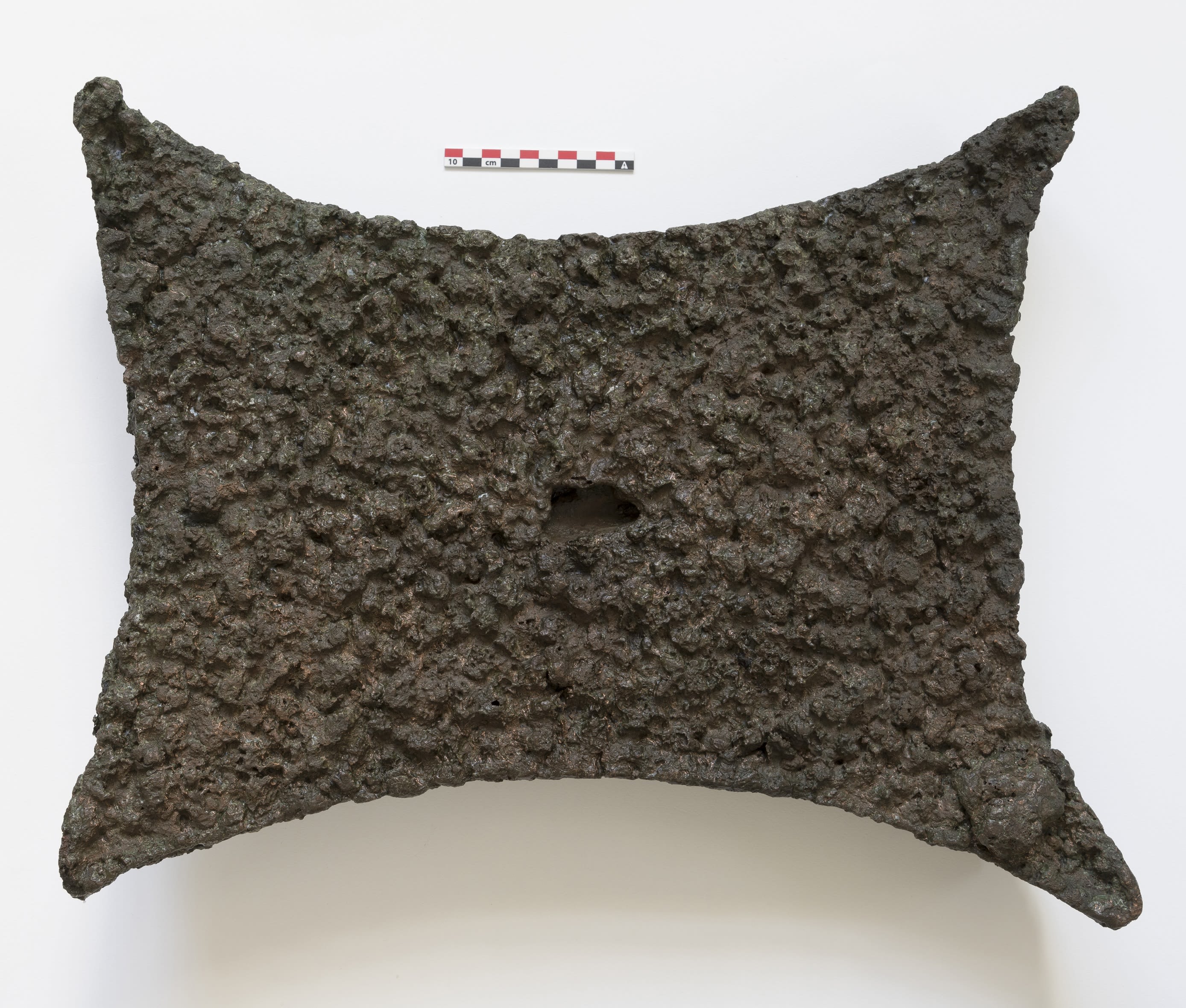
Heraklion Archaeological Museum
Heraklion Archaeological Museum
Two 30 kg copper ingots. This one (c. 1520 – 1450 bce) was found at Crete’s Hagia Triada, the site of an ancient Minoan settlement. It was produced on Crete with copper mined on Cyprus, the ingot takes the shape of an ‘ox hide’ to make it easier for two men to carry. The ingot represented a standardised form of currency and would have been melted down to make vessels, tools, weapons and other bronze objects.
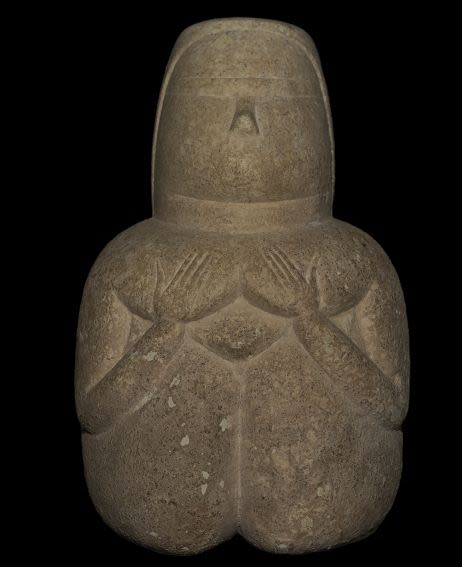
National Archaeological Museum, Cagliari
National Archaeological Museum, Cagliari
A limestone statuette made during the Middle Neolithic period (c. 5000 – 4500 bce) on Sardinia. The statuette represents a standing female figure with a swollen chest and highlighted pubic triangle. The object was excavated at the necropolis of Cuccuru S’Arriu together with other burial gifts including pottery vessels, and tools made from stone and bone. The dead were adorned with necklaces made up of minute chlorite wheels and shells, and buried in artificial cave tombs.
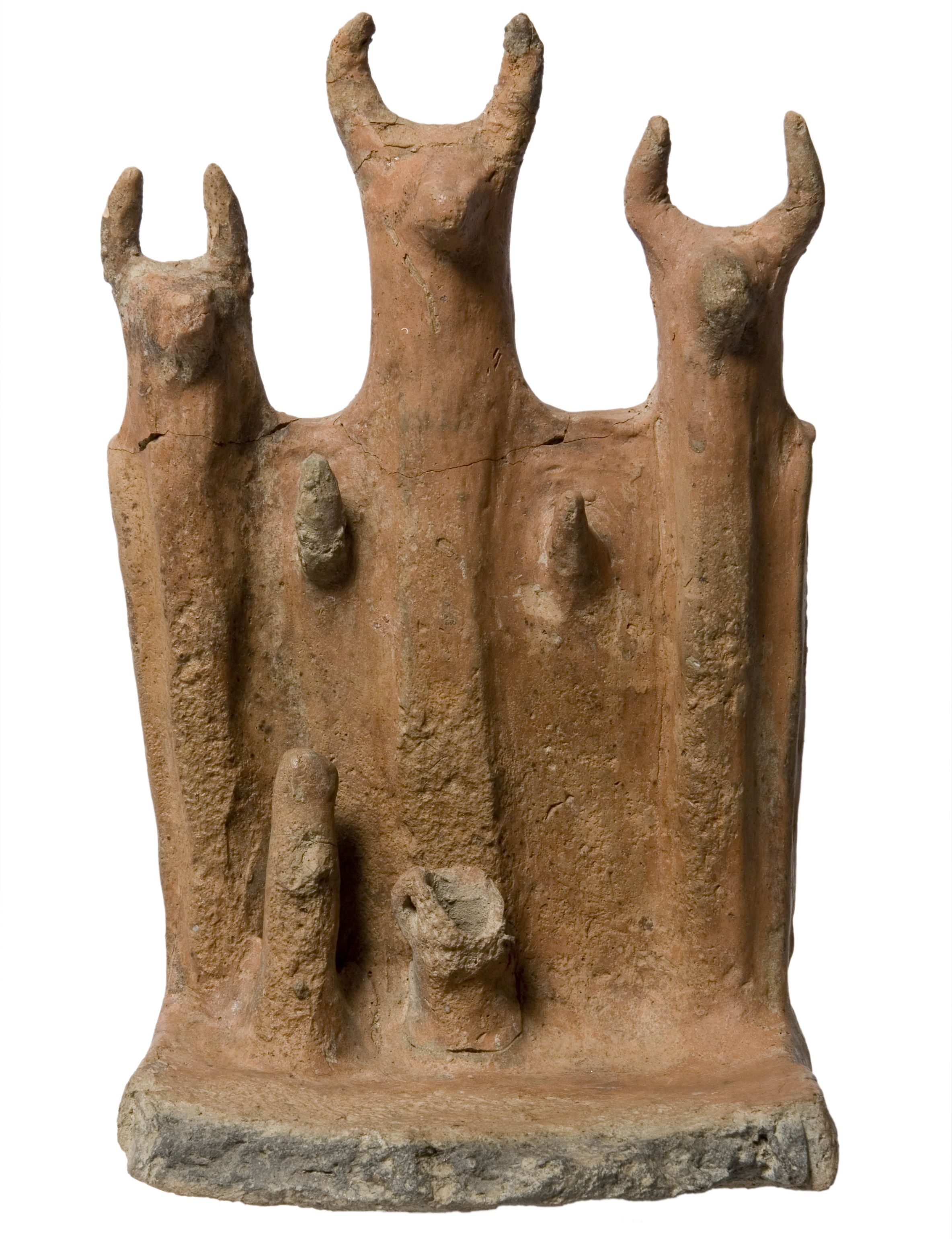
Cyprus Museum
Cyprus Museum
A Bronze Age clay model of a shrine (c. 2100 – 2000 bce) from Cyprus depicting a human figure standing before a tripartite panel. A horned animal head sits at the top of each pole and a vessel rests at the base of the central pole, perhaps intended to receive libations. This object was confiscated from tomb looters active in the area of Kotsiati or Marki in 1970.
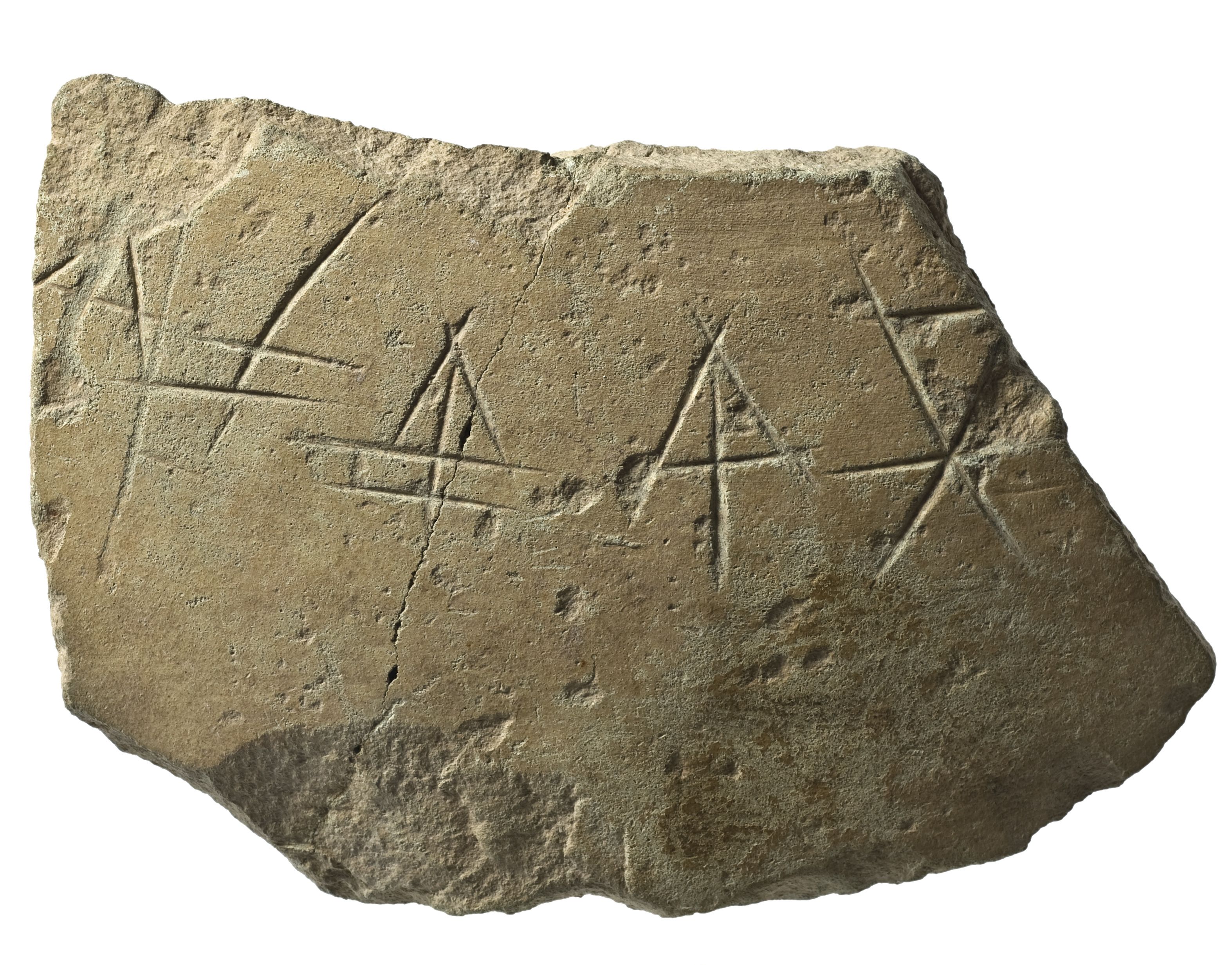
Cyprus Museum
Cyprus Museum
This fragment is from the rim section of a large vessel (c. 1300 – 1200 bce) for storying agricultural goods. Excavated at Enkomi in Cyprus, it bears five signs of the Cypro-Minoan script, the writing system that appeared on the island at the very beginning of the Late Bronze Age. This writing system is thought to be derived from Linear A of Minoan Crete but remains undeciphered. It may denote ownership or designate the contents of the vessel.
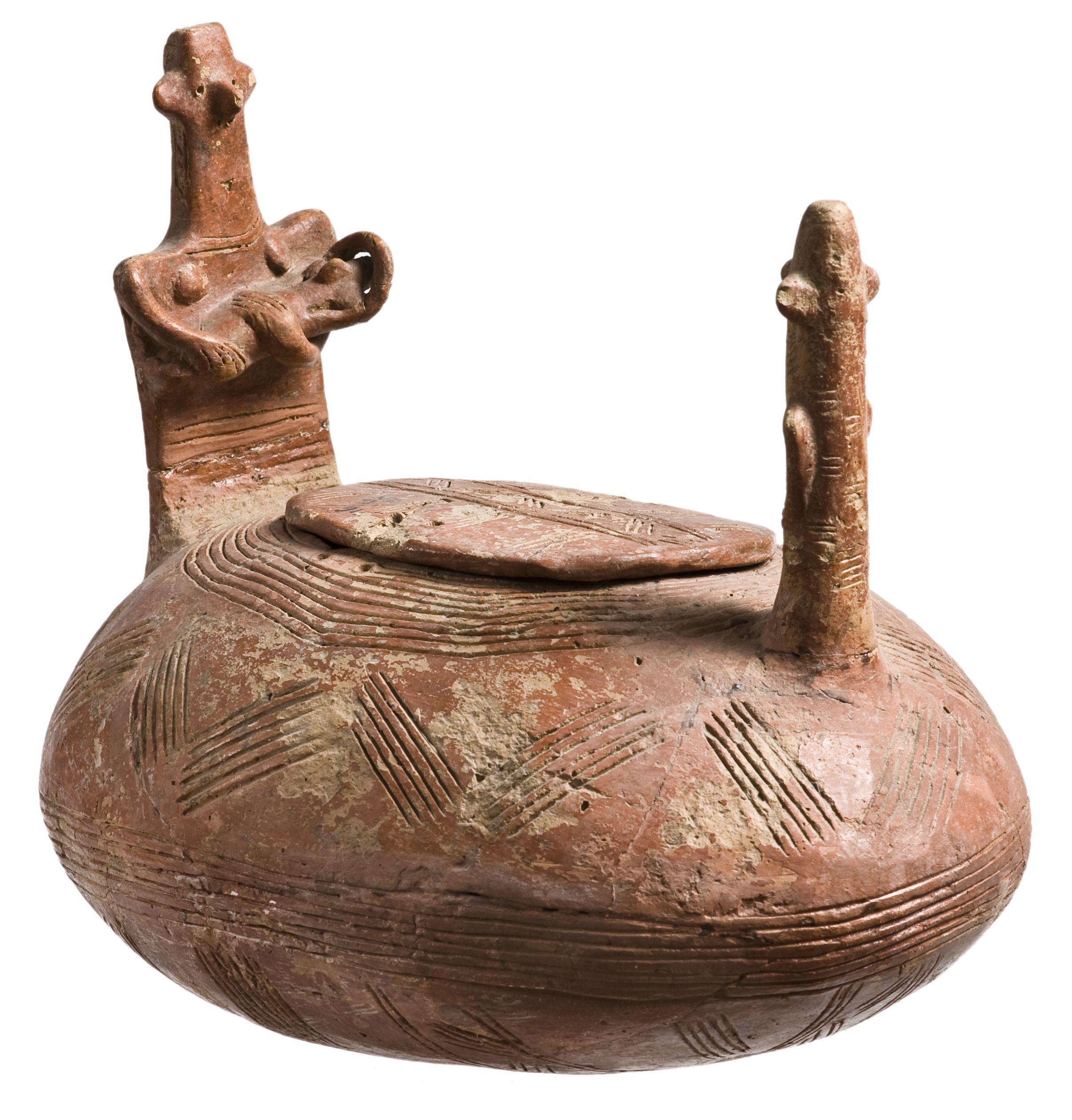
Cyprus Museum
Cyprus Museum
An oval-shaped ceramic storage box (pyxis) for small valuables discovered in an Early Bronze Age tomb in Bellapais Vounous, Cyprus in the 1930s. The box features two standing figures facing each atop its narrow sides. The larger represents a mother holding an infant, the other has its hands resting on its stomach, leading some to associate such objects with a fertility goddess.
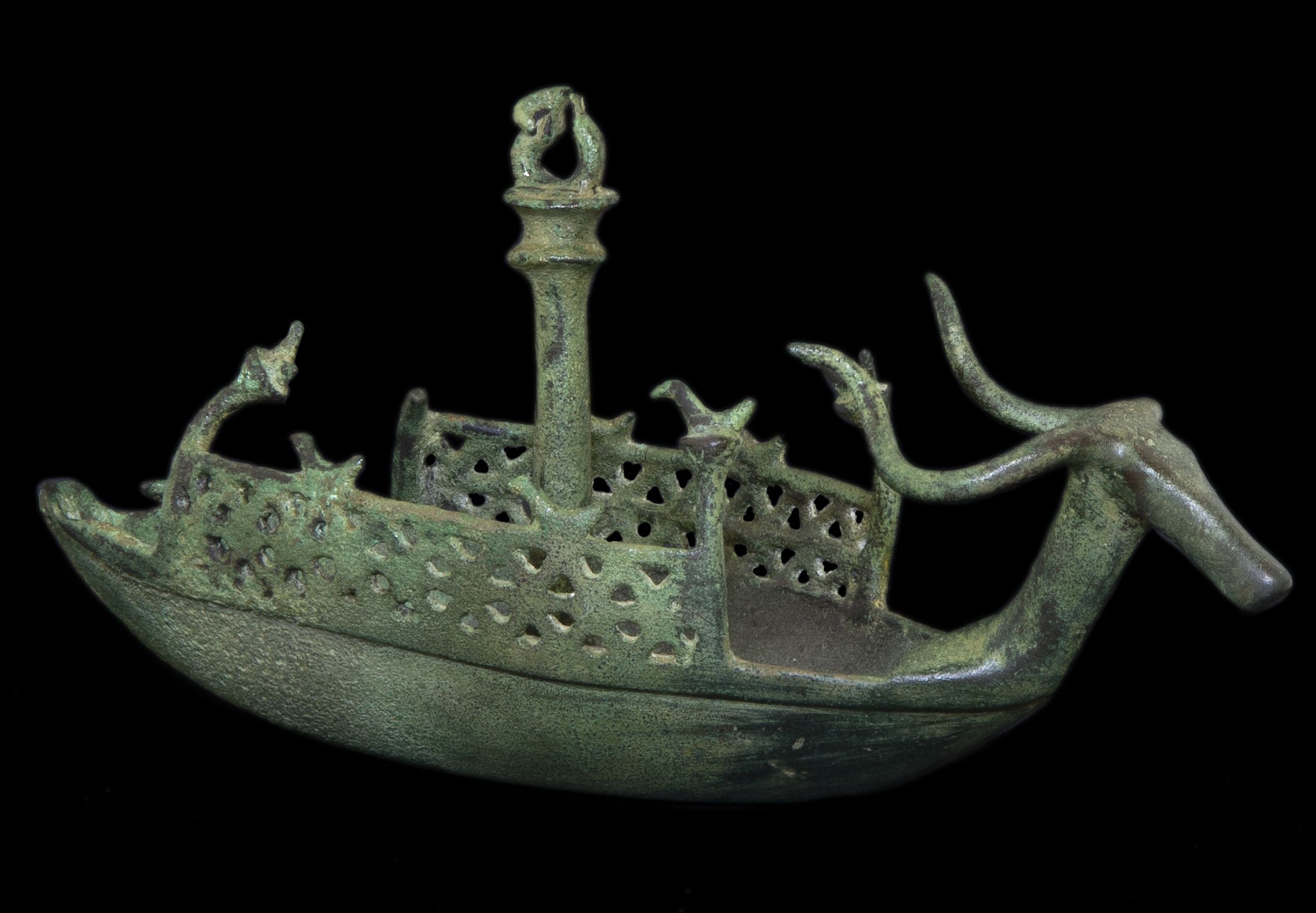
National Archaeological Museum, Cagliari
National Archaeological Museum, Cagliari
A model of a bronze boat from Orroli, Sardinia (c. 1000 – 600 BCE) emphasises the growing importance of seafaring, trade and communication to all three islands from the Bronze Age. The side columns and the central mast probably represent stylized versions of Nuragic towers, the megalithic stone towers from which Nuragic Sardinians took their name. For sailors, the towers would have been a powerful symbol of returning home but also control over sea routes.
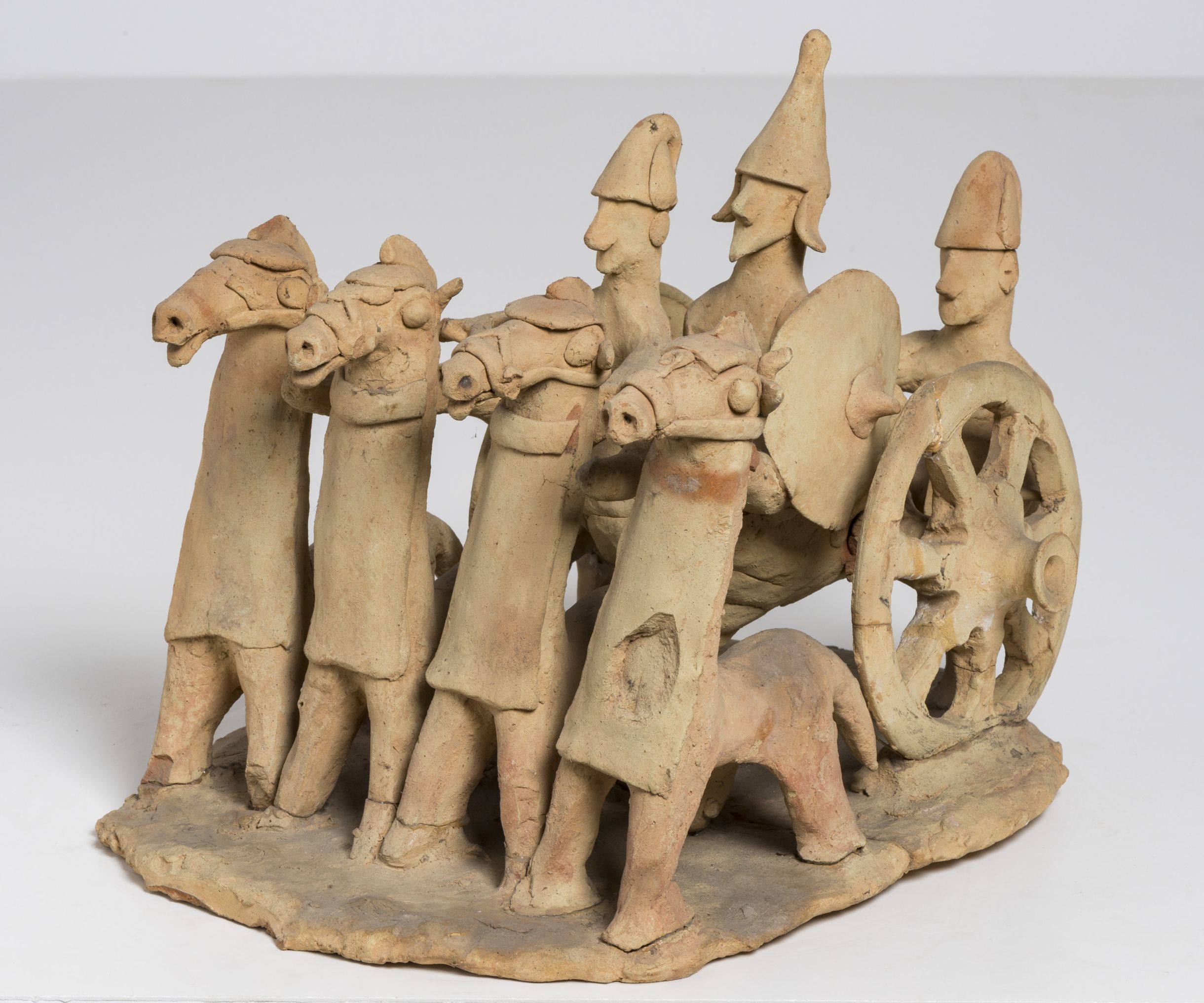
Cyprus Department of Antiquities
Cyprus Department of Antiquities
A ceramic model of a horse-drawn chariot and rider (750 – 600 BCE) from Cyprus’ Sanctuary of Agia Eirini, an open-air shrine which revealed over 2,000 clay votive figurines depicting humans, sphinxes, minotaurs, priests with bull masks and more unusually chariots such as this.
The exhibition is organised in partnership with the Ministry of Culture and Sports, Greece; the Department of Antiquities, Ministry of Transport, Communications and Works, Cyprus; and the National Archaeological Museum, Cagliari, Sardinia.
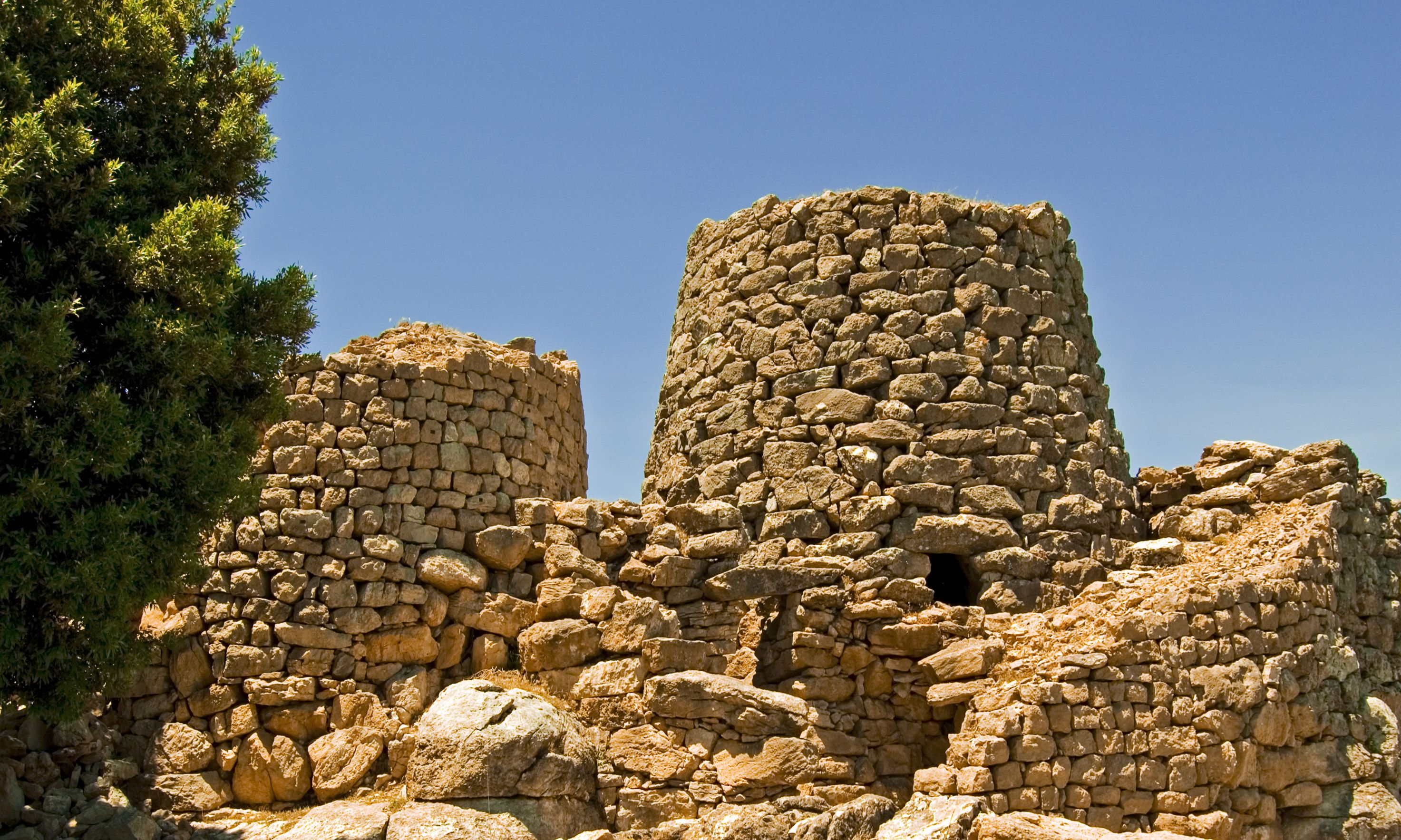
Published 15th February 2023
Reference
A. Christophilopoulou (ed.), Islanders: The making of the Mediterranean (2023). ISBN 9781 913645 496
The text in this work is licensed under a Creative Commons Attribution 4.0 International License
Image credits
The Fitzwilliam Museum: Statue of Dionysos; Calf-head earring; ‘Tulip’ bowl; Pashley Sarcophagus
Dimitris Vetsikas from Pixabay: Title image (Kourion, Cyprus)
Orestis Seferoglou: Dr Christophilopoulou and wall maker; Siphnos community event
Cyprus Museum: Seen for the first time banner image: Detail of a figure of a man (ceramic, ca. 700–600 bce), found Agia Eirini, Cyprus; Clay model of a shrine; Vessel fragment with Cypro-Minoan script; Pyxis with human figures
National Archaeological Museum, Cagliari: Bronze figurine of a seated woman with a child; Neolithic mother goddess; Bronze boat
Heraklion Archaeological Museum: Larnax; Copper ingot
Cyprus Department of Antiquities: Ceramic model of a horse-drawn chariot and rider
Alessandro Flore for Dreamstime.com: Nuraghe Sebrissi
